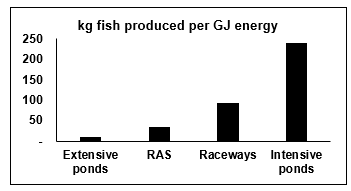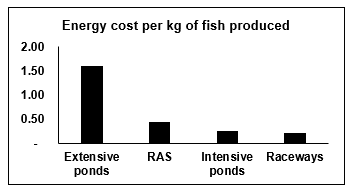RESOURCE USE EFFICIENCY IN U.S. AQUACULTURE: FARM-LEVEL COMPARISONS ACROSS FISH SPECIES AND PRODUCTION SYSTEMS
Understanding farm-level efficiencies of resource use is critical to comparisons of the sustainability of aquaculture production systems. This study developed a set of practical resource-use efficiency metrics to calculate and compare resource-use efficiency with resource-cost efficiency across major species and production systems in U.S. aquaculture. Results showed that no one production system used all resources most efficiently. Intensive pond production of catfish Ictalurus punctatus demonstrated the greatest efficiency in the use of water, energy, labor, management, and capital resources, while RAS production was most efficient in terms of land and feed use. Among the wide array of pond scenarios examined, more intensive scenarios generally were more efficient in terms of several metrics, but economic sustainability also depends upon business models that effectively meet differing demand requirements of customers. Thus, less intensive production systems were economically sustainable in areas with relatively abundant land and water resources available at lower cost. Labor efficiencies varied widely across scenarios analyzed. Given increasing concerns related to the availability of labor for aquaculture farming in the U.S., greater attention to the efficiency of labor on farms is warranted. The metrics used were aligned with common farm management tools (e.g. enterprise budgets) that allow for ease of use by farms and researchers to assess effects on comparative resource-use efficiencies of new farming practices and technologies under development.

